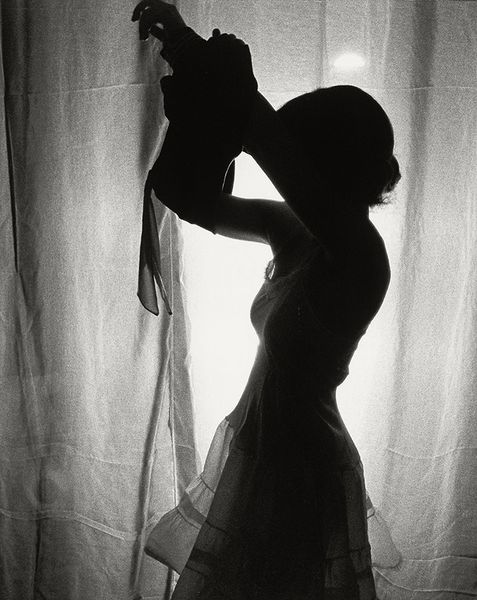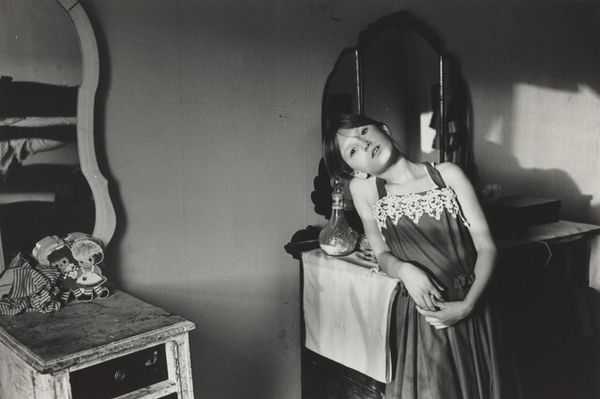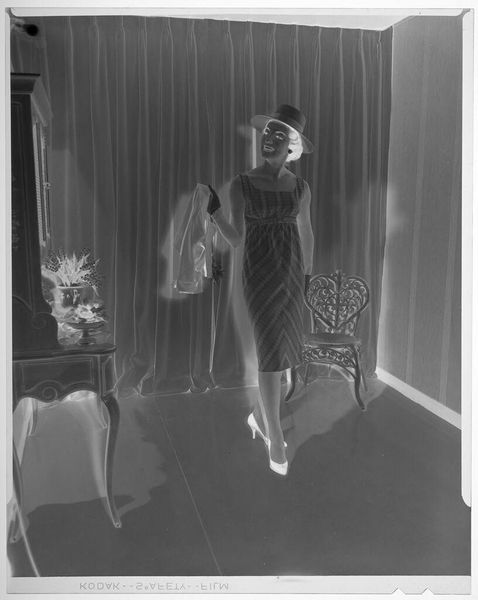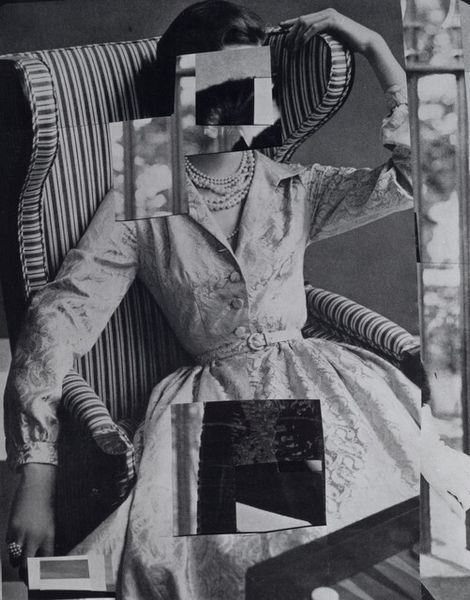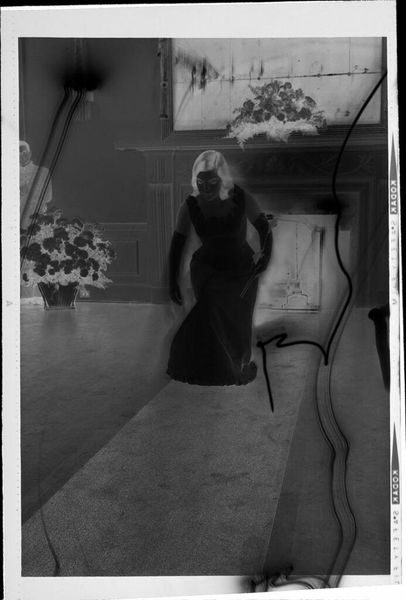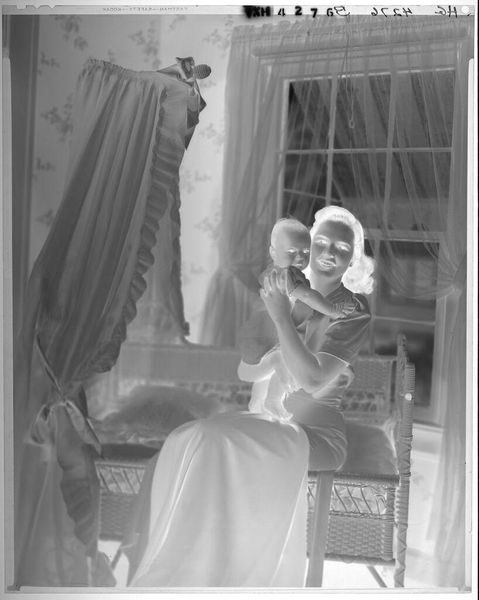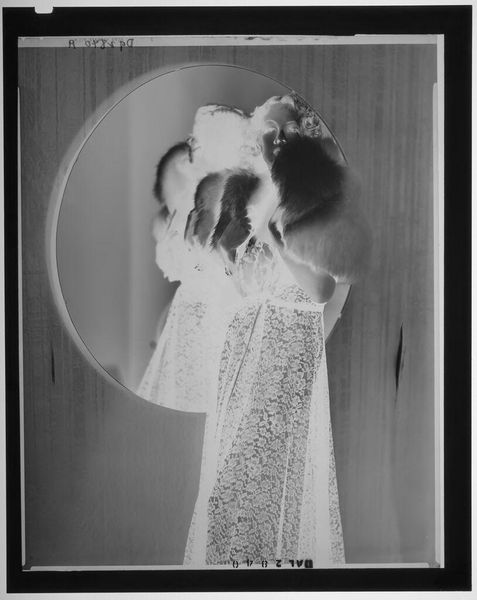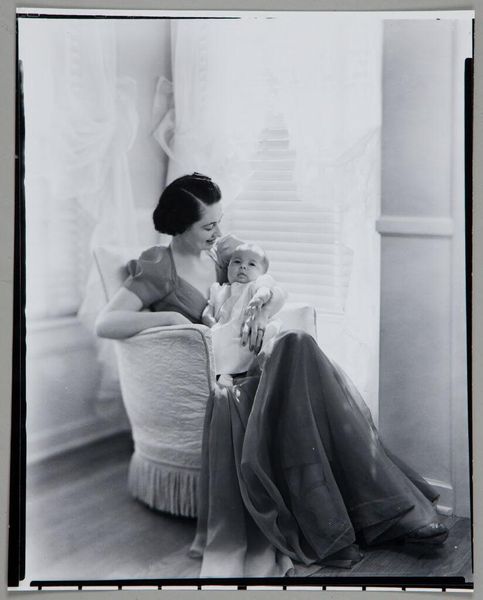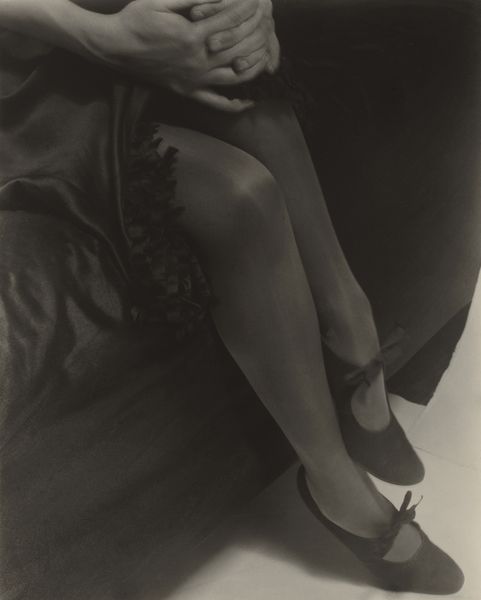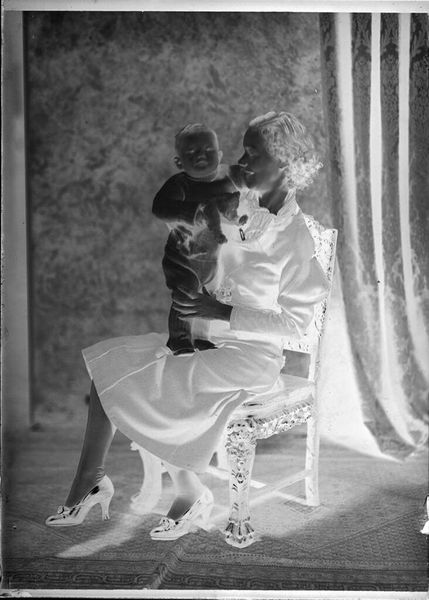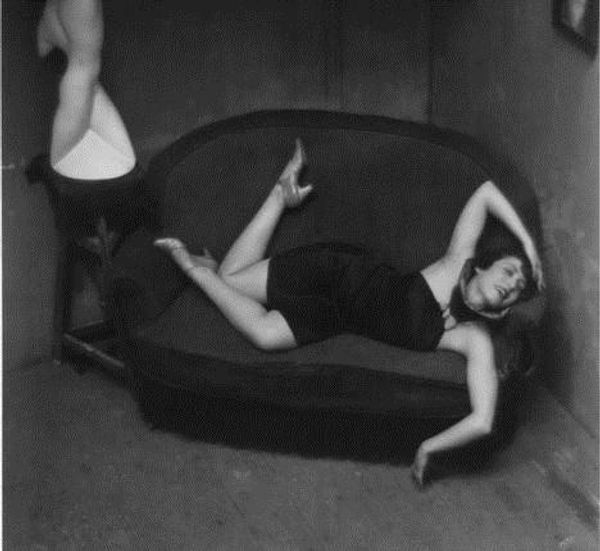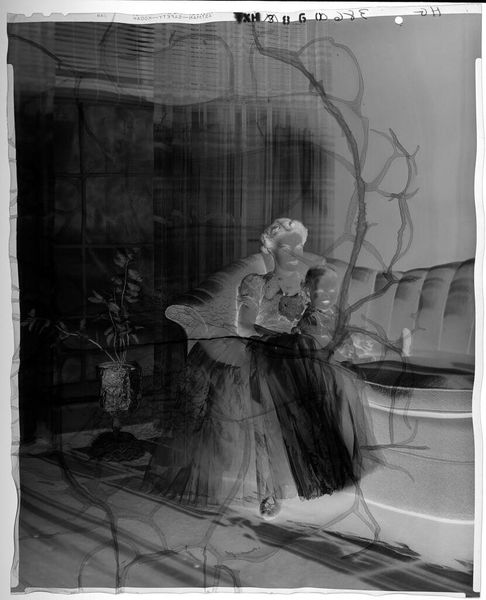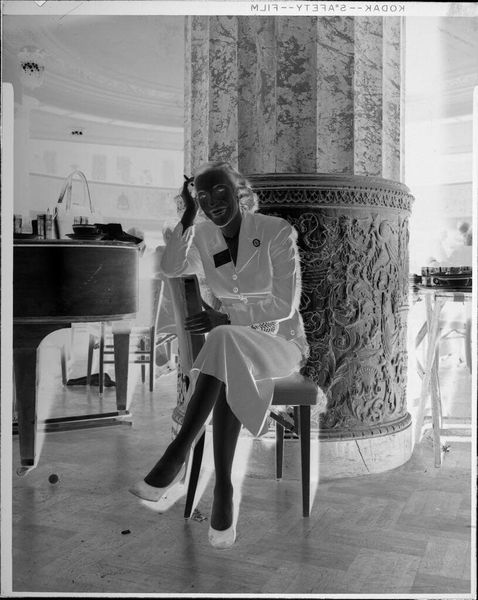
photography
#
portrait
#
still-life-photography
#
black and white format
#
photography
#
black and white theme
#
black and white
#
monochrome photography
#
monochrome
#
realism
#
monochrome
Copyright: Philippe Halsman,Fair Use
Editor: Here we have Philippe Halsman's "Pregnant Girl," a black and white photograph from 1950. It strikes me as a rather subdued, intimate portrait. What aspects of this photograph stand out to you? Curator: As a materialist, I’m drawn to how the limitations of the photographic process at the time shaped the image. Black and white photography necessitates careful consideration of light and shadow, influencing our perception. Notice how the soft light interacts with the delicate fabric of her dress, and then think about the availability and cost of photographic materials at the time. What does this scarcity and technical consideration tell us about the accessibility of artmaking and the portrayal of women, specifically, pregnant women, in that era? Editor: So, the materials used to make the photograph impact our reading of the artwork. It’s interesting you bring up the scarcity of resources. It makes me consider who would even have access to these technologies at that time, which directly dictates whose stories were being told and preserved in images. Curator: Exactly. Think also about the social context. Mid-century America had very specific expectations for women. Pregnancy was often idealized, but also subject to significant social constraints and a double standard for how unmarried women, specifically, should look and act. Halsman is depicting this woman with what appears to be honesty and vulnerability. What can be interpreted from the texture of the dress, seemingly homemade, compared with the artificial posing we see in a lot of family photos? Editor: It sounds like the "making" of the image is inseparable from the woman in the image and her lived experiences! Thinking about it now, the material conditions influenced both her life and the final artwork. It all gives this seemingly simple image so much depth. Curator: Precisely. By focusing on the material conditions and the means of production, we unveil a more nuanced understanding of not only the photograph but also the societal forces at play during its creation. I have gained a new level of admiration of what I thought was simply a photo! Editor: Agreed! Now I know that analyzing art is always more interesting when you ask, 'how was this made, and under what conditions?'
Comments
No comments
Be the first to comment and join the conversation on the ultimate creative platform.
